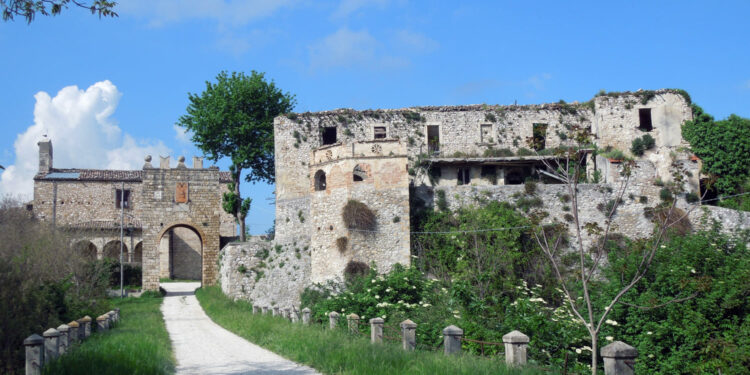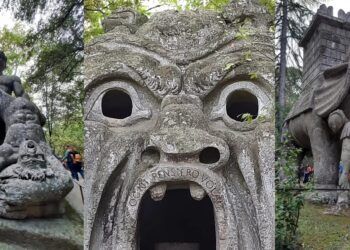In the heart of Abruzzo, in the province of Teramo, there is a fascinating and almost forgotten place: Faraone, a hamlet of the municipality of Sant’Egidio alla Vibrata. This village, which is slowly disappearing, has been devoured by time and nature, almost hidden from the eyes of the modern world. But it is precisely this aura of solitude and silence that makes it the perfect destination for those who want to discover a corner of history and authentic beauty.
Pharaoh’s name dates back to the Middle Ages and apparently derives from the Lombard word “fara,” which means camp. This ancient place was inhabited for a long time, but its fate took a dramatic turn in 1950, when a violent earthquake hit the area, causing extensive damage to the structures. On September 5 of that year, at 4 in the morning, the earth shook with such force that it pushed the inhabitants to leave the village. This event paved the way for the creation of a new town, located a short distance from the old one. The migration process and the complete construction of the new hamlet took 15 years.
What does the ancient village of Faraone look like today?
Today, the old village of Faraone appears like an authentic ghost town. However, some traces of its past remain well preserved. The two entrance doors of the city walls, which once protected the village, are still visible. Once upon a time, to access Faraone, you crossed a wash bridge which has now been replaced by pieces of land that overlook the canal that once carried the past waters. The reconstruction of Faraone was possible thanks to the generous funding obtained from the parish priest of the time, Don Giovanni Reale, who had influential friends.
The entrance arch of the town is decorated with a bas-relief depicting a Madonna and Child, to whom San Giovannino offers the town of Pharaoh as a gesture of invocation for the protection of the inhabitants. This work was created by Ghino Sassetti, a renowned sculptor in the last century. Immediately after entering the town, you reach a small square where the Church of Santa Maria delle Misericordie stands, dating back to the mid-fifteenth century. Initially, only the lower wall part was built, while the rest of the structure was added in the following decades. The current appearance of the church is the result of restorations that took place in the nineteenth century.
What can you visit?
In the heart of the village of Faraone Antico stands the imposing palace of the Baroni Farina. This building, together with the Ranalli families (who still own much of Pharaone Nuovo’s lands) and Faragalli, represents one of the focal points of the ancient landed aristocracy of the area. The building housed a nunnery and, on the ground floor, a kindergarten. Even today, the ceiling of the upper floor is adorned with harmonious colored decorations that tell its story. The other buildings, which in the past housed a bar and the post office, now show clear signs of age and are invaded by vegetation.
Faraone in Sant’Egidio alla Vibrata is a place that enchants with its atmosphere of solitude and its historical heritage. If you are looking for an escape from the frenzy of modern life and want to discover a corner of Abruzzo rich in history and beauty, this forgotten village could be the ideal destination for your next adventure.










Discussion about this post